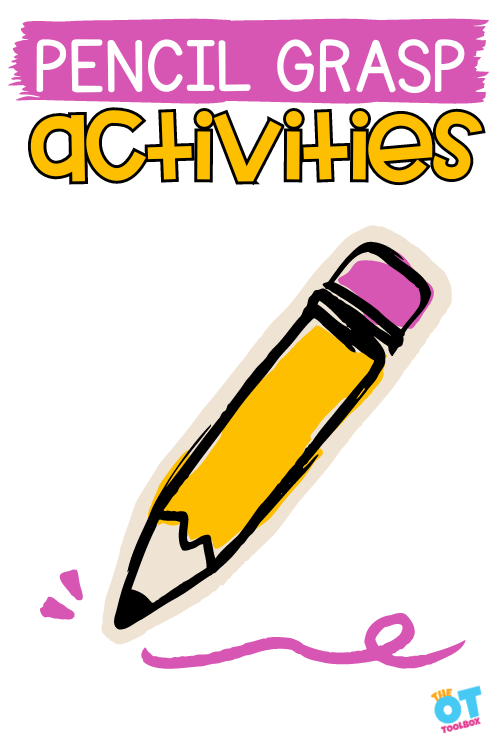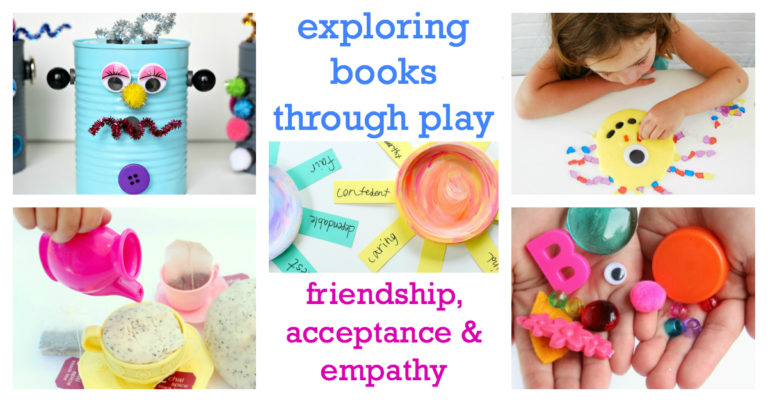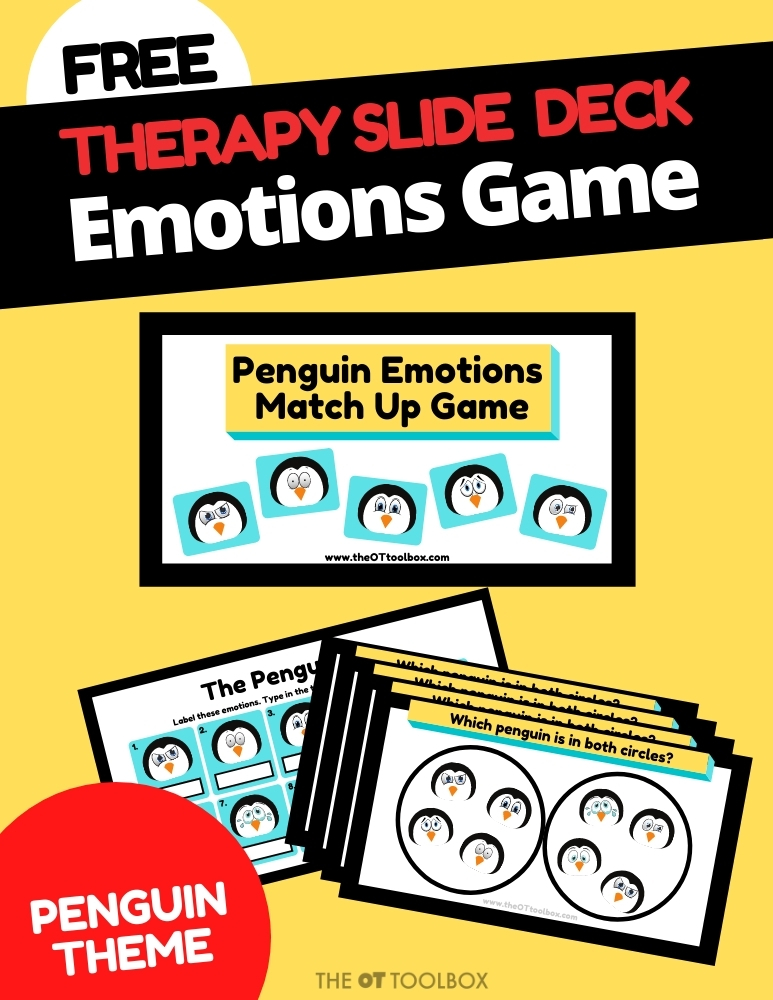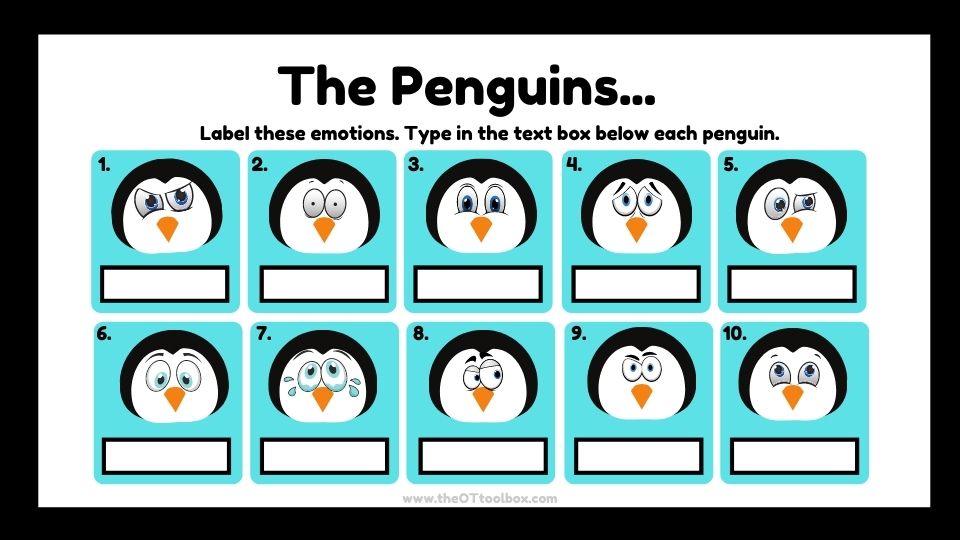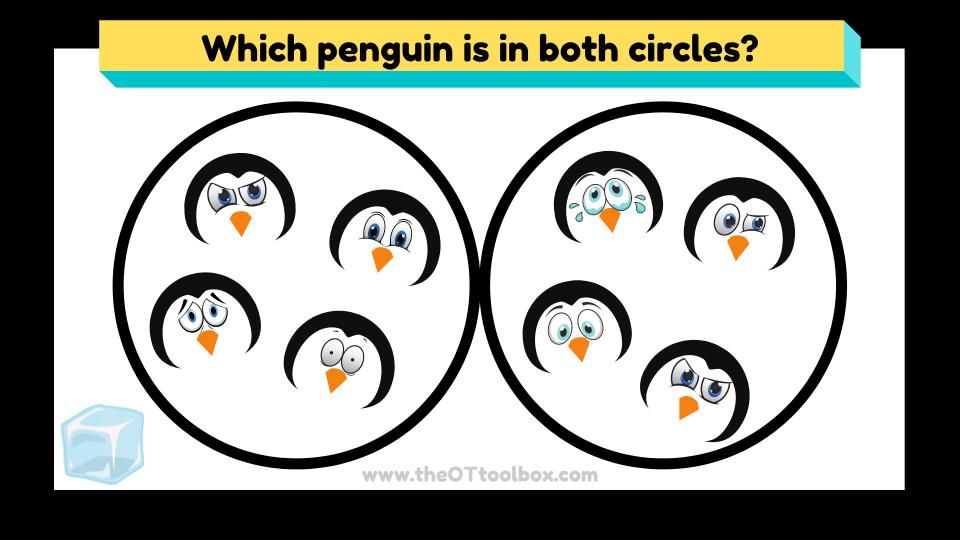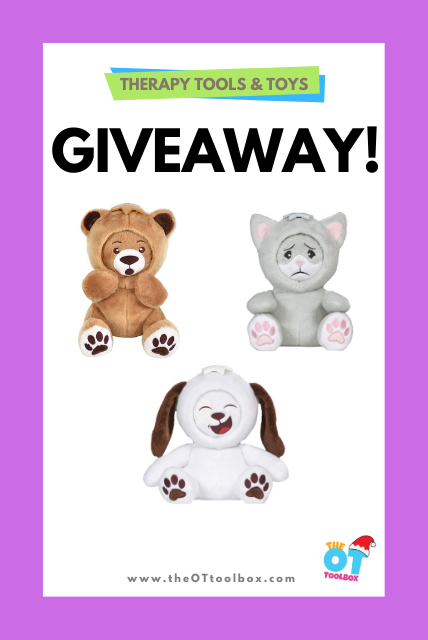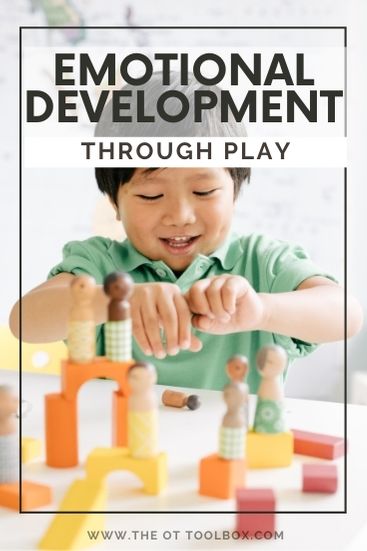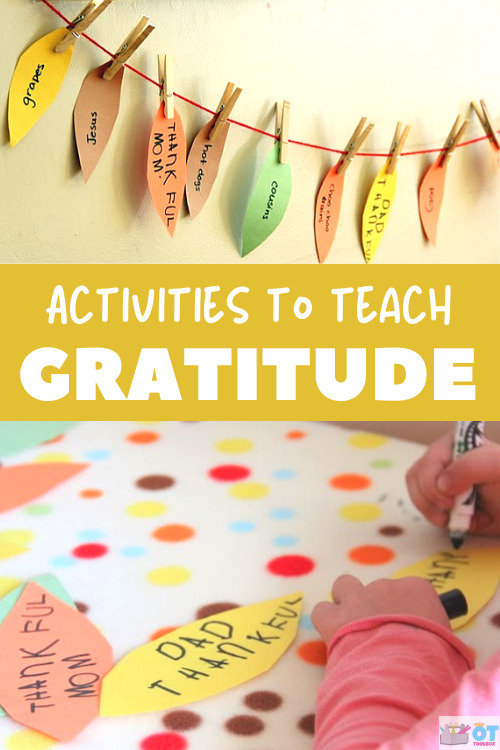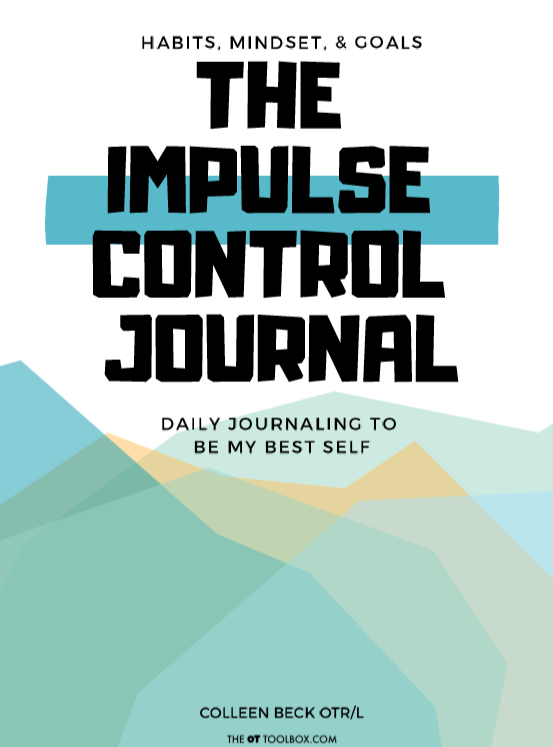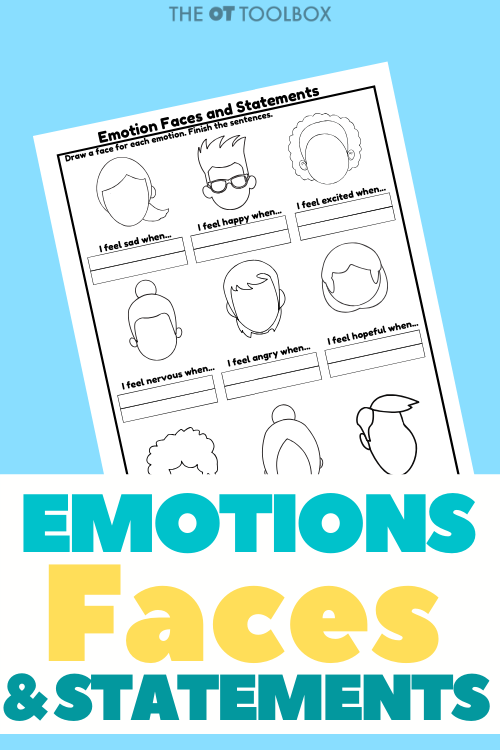Today, I’ve got a fun emotion matching game that you can use in teletherapy sessions to teach emotions and feelings. This social emotional learning activity is an online game that kids will love to use in virtual therapy while working on things like identifying facial expressions as well as the visual perceptual skills like visual discrimination, visual scanning, and form constancy.
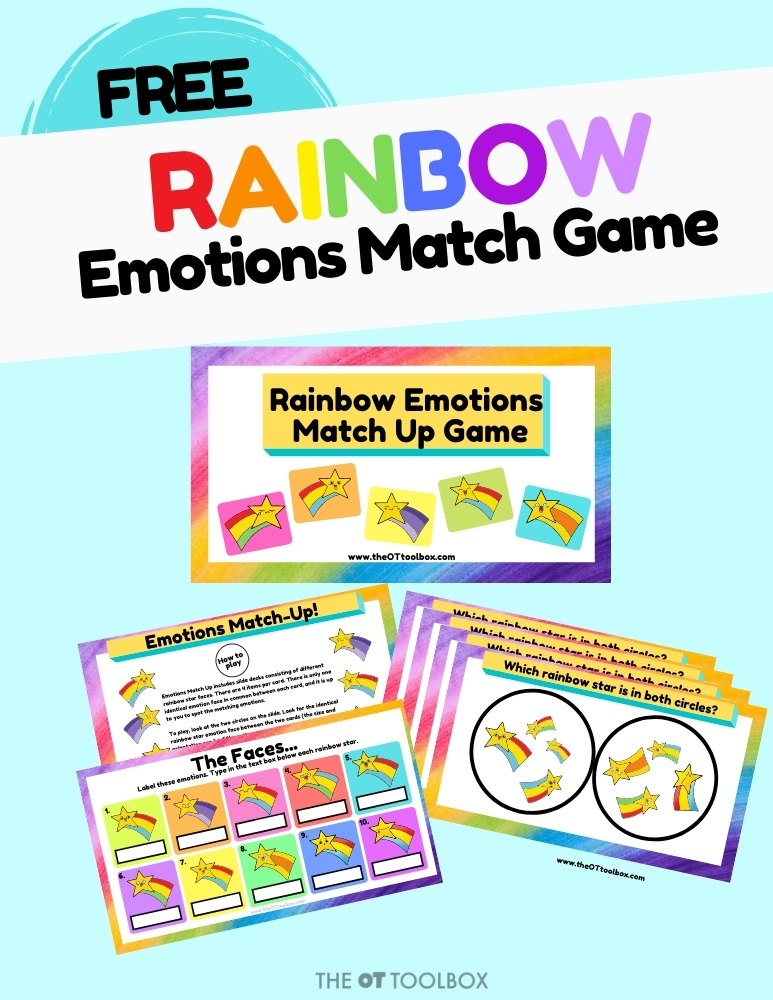
Emotion Matching Game
If working on emotions in a spot it game is helpful in your occupational therapy interentions, this emotions matching game will do the trick.
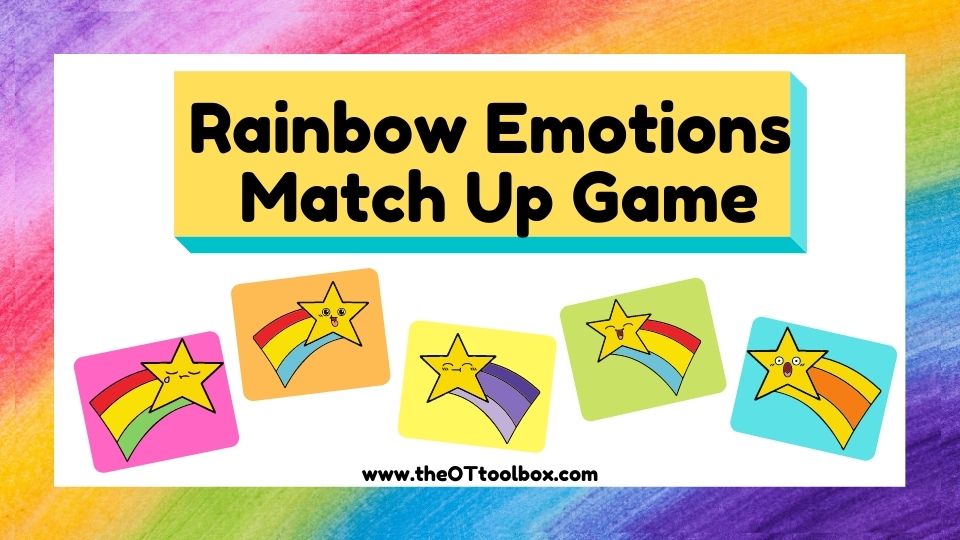
Kids can work through the slides and first, identify emotions based on facial expressions of the stars on each rainbow star.
There is a text box under each facial expression where users can type the name of the facial expression.
Next, kids can work through each slide to identify the matching emotions. There are only two facial expressions that match on each slide and kids can move the clouds over to cover the matching emotions.
This slide deck covers a variety of skill areas:
- Visual scanning
- Visual form constancy
- Visual discrimination
- Visual attention
- Visual memory
- Social emotional learning
- Identifying emotions
- Eye hand coordination
- Typing skills
- Computer mouse skills
Identifying and expressing emotions through play is an important part of social emotional development. This game offers an oppourtunity to work on these skills in virtual therapy sessions.
For more ways to work on emotion matching, try these activities and resource pages:
- Free social emotional learning worksheets
- Zones of Regulation Activities
- Emotional Development Toys
- Penguins Emotions Game free slide deck
- Writing about Friendship free slide deck
Want to add this emotion matching game to your therapy toolbox?
Enter your email address into the form below and you’ll receive this Google slide deck game.
Google Slide Deck TIPS:
- Save the PDF file that you receive once you enter your email below, because you can come back to it again and again and send it to the kids on your caseload (or classroom) so they can make their own copy on their Google drive.
- You will be prompted to make a copy of the slide deck. Before clicking that, be sure that you are logged into your Google account.
- Make a copy for each student’s Google Drive. When you share it, make sure you enable edit capabilities for users.
- The pieces will be moveable in “edit” mode. If you click “present”, the movable ice cubes won’t work.
- Be sure to make a copy of this slide deck and not change the url to indicate “edit” at the end. When you make a copy of the slide deck onto your Google drive, you will end up with your own version that you are free to adjust in order to meet your student’s needs. By changing the url to “edit”, you can potentially mess up the original version that many other therapists and The OT Toolbox users are given.
- To easily start a new game- Once you’ve gone through all of the slides, go to “history” on the top of the Google dashboard. You will be able to revert the slide to it’s original state using the history option, so all of the ice cubes go back to their original place. The history option is located on the top dashboard by clicking the link that says, “last edit was…”. When you click on that, you will see a list of edits made on the right side of your screen. Click on the edit titled, “New Game (Revert slides to their original state)”. This should move all of the movable ice cubes back to their original location on the slide deck. The typed in emotions on the text boxes will disappear as well. Note that you can delete edits from that list, so if several students are using the slides, you can keep the organization simple and delete edit versions that you no longer need.
MORE Emotions Games and Activities
Want to help kids explore social and emotional learning through play? Exploring Books Through Play inspires social and emotional development though play based on children’s books. The specifically chosen books explore concepts such as differences, acceptance, empathy, and friendship.
Exploring Books Through Play: 50 Activities Based on Books About Friendship, Acceptance and Empathy is filled with hands-on activities rooted in interactive, hands-on, sensory play that focus on creating a well-rounded early childhood education supporting growth in literacy, mathematics, science, emotional and social development, artistic expression, sensory exploration, gross motor development and fine motor skills. Kids can explore books while building specific skills in therapy sessions, as part of home programs, or in the home.
Click here to explore acceptance, empathy, and friendship through play.

